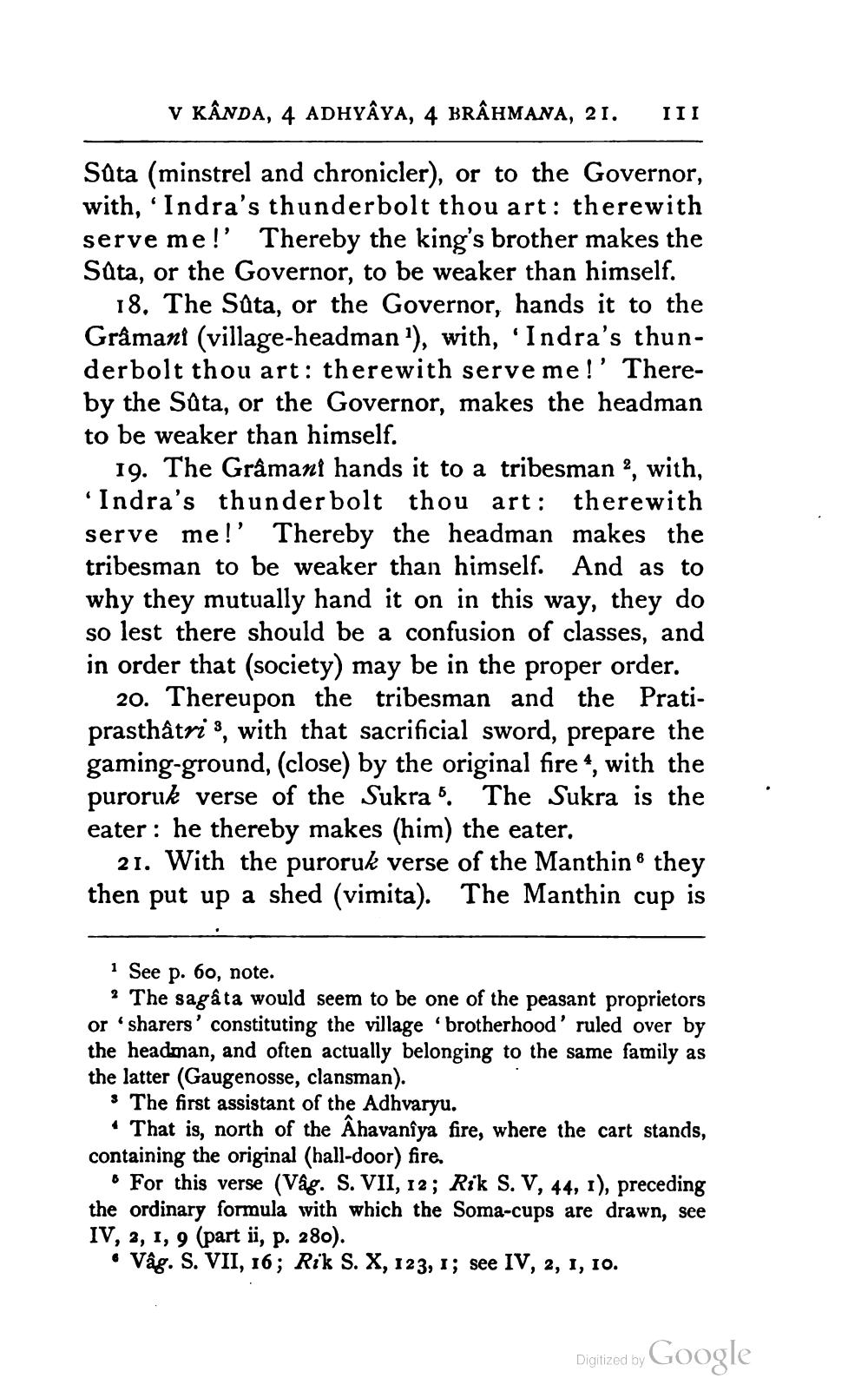________________
V KÂNDA, 4 ADHYÂYA, 4 BRAHMANA, 21.
III
Sata (minstrel and chronicler), or to the Governor, with, 'Indra's thunderbolt thou art: therewith serve me!' Thereby the king's brother makes the Sata, or the Governor, to be weaker than himself.
18. The Sata, or the Governor, hands it to the Gråmani (village-headman), with, 'Indra's thunderbolt thou art: therewith serve me!' Thereby the Sata, or the Governor, makes the headman to be weaker than himself.
19. The Grâmant hands it to a tribesman , with, 'Indra's thunderbolt thou art: therewith serve me!' Thereby the headman makes the tribesman to be weaker than himself. And as to why they mutually hand it on in this way, they do so lest there should be a confusion of classes, and in order that (society) may be in the proper order.
20. Thereupon the tribesman and the Pratiprasthầtris, with that sacrificial sword, prepare the gaming-ground, (close) by the original fire 4, with the puroruk verse of the Sukra 5. The Sukra is the eater : he thereby makes (him) the eater.
21. With the puroruk verse of the Manthin they then put up a shed (vimita). The Manthin cup is
· See p. 60, note.
? The sagâta would seem to be one of the peasant proprietors or 'sharers' constituting the village brotherhood' ruled over by the headman, and often actually belonging to the same family as the latter (Gaugenosse, clansman).
3 The first assistant of the Adhvaryu.
+ That is, north of the Âhavanîya fire, where the cart stands, containing the original (hall-door) fire.
o For this verse (Vág. S. VII, 12; Rik S. V, 44, 1), preceding the ordinary formula with which the Soma-cups are drawn, see IV, 2, 1, 9 (part ii, p. 280).
• Vâg. S. VII, 16; Rik S. X, 123, 1; see IV, 2, 1, 10.
Digitized by Google




